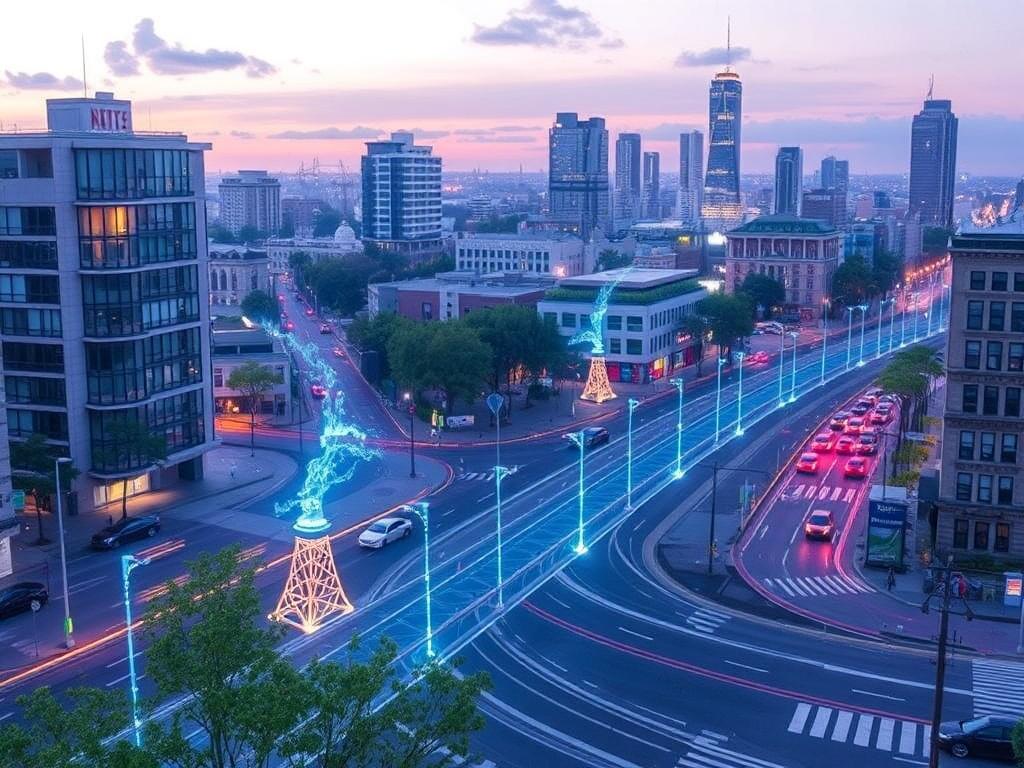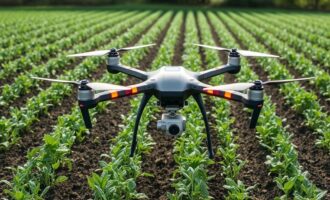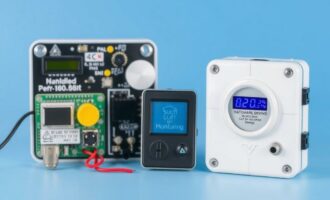- Understanding the Energy Challenges in Modern Cities
- The Role of IoT in Smart Cities
- Ways IoT Is Cutting Energy Waste in Smart Cities
- 1. Smart Lighting Systems
- 2. Intelligent Building Management
- 3. Smart Energy Grids and Metering
- 4. Waste Heat Recovery and Environmental Monitoring
- 5. Smart Transportation Networks
- Real-World Examples: How Cities Are Winning with IoT
- Benefits Beyond Energy Savings
- Challenges in Implementing IoT for Energy Efficiency
- The Future of IoT and Energy Efficiency in Smart Cities
- Key Areas to Watch:
- How Residents Can Support IoT Energy Efficiency Efforts
- Conclusion
Imagine a city where every streetlight dims when no one is around, where your home’s heating system adjusts itself perfectly before you even walk in, and where millions of devices communicate seamlessly to reduce energy consumption. This isn’t a distant dream—it’s the reality that the Internet of Things (IoT) is bringing to smart cities around the world. As urban areas continue to swell with people and activity, the challenge of managing energy efficiently becomes more crucial. Fortunately, IoT technologies are stepping in to cut energy waste in smart cities by optimizing how power is used, reducing costs, and contributing to a greener future.
In this article, we’ll explore how IoT is revolutionizing urban energy management. We’ll delve into specific systems, real-world applications, and the practical benefits these technologies offer. By the end, you’ll understand why IoT is a game-changer in the quest to build sustainable and energy-efficient smart cities.
Understanding the Energy Challenges in Modern Cities

Cities consume around 75% of the world’s energy and produce more than 70% of global CO2 emissions. This tremendous energy demand comes with inherent inefficiencies and waste. Outdated infrastructure, ineffective lighting, excessive heating or cooling, and unmanaged energy grids often lead to unnecessary consumption. Energy waste in smart cities is not just an economic burden but an environmental crisis, driving the urgent need for innovative solutions.
Traditional systems often operate on fixed schedules or manual controls that can’t adapt to dynamic urban environments. For example, streetlights may stay on all night regardless of pedestrian or vehicular traffic, and buildings might heat or cool empty rooms. These inefficiencies highlight the potential for IoT technologies to intervene, gather real-time data, and optimize energy use.
The Role of IoT in Smart Cities
At its core, the Internet of Things refers to a network of interconnected devices equipped with sensors, software, and communication capabilities. These devices collect and exchange data, making them intelligent actors in managing city systems.
In smart cities, IoT can seamlessly integrate everything from traffic signals to water systems to building management. This interconnectedness enables precise control and monitoring, allowing cities to react instantly to changing conditions and reduce unnecessary energy use.
Ways IoT Is Cutting Energy Waste in Smart Cities
1. Smart Lighting Systems
Street lighting accounts for a significant portion of urban energy consumption. IoT-enabled smart lighting uses sensors and connected networks to illuminate streets only when necessary. Motion detectors sense when pedestrians or vehicles are nearby, adjusting brightness accordingly or turning lights off when no one is present.
Moreover, these systems can schedule lighting based on sunset and sunrise times or special events, and they can report maintenance needs autonomously, reducing downtime and energy wastage. Cities implementing smart lighting report up to 60% savings in energy costs.
2. Intelligent Building Management
Buildings are among the largest consumers of energy in urban areas due to heating, ventilation, air conditioning (HVAC), and lighting. IoT-driven building management systems (BMS) use sensor data to control these elements more efficiently.
For example, sensors track occupancy and temperature in real-time, adjusting HVAC settings to ensure comfort only when rooms are occupied. Smart windows and blinds can automatically modulate natural light and temperature to reduce reliance on artificial lighting and heating or cooling systems. These adjustments decrease energy waste without sacrificing comfort.
3. Smart Energy Grids and Metering
The traditional energy grid struggles with inefficiencies due to unbalanced loads and lack of real-time data. IoT-powered smart grids employ connected sensors to monitor electricity consumption and production in real time at granular levels.
Smart meters provide consumers and utilities with detailed insights about energy use, enabling demand response strategies that reduce peak loads and prevent waste. This real-time visibility incentivizes energy-saving behaviors and allows renewable energy sources like solar and wind to be better integrated into the grid.
4. Waste Heat Recovery and Environmental Monitoring
Some IoT installations capture waste heat from industrial or urban processes and reuse it for heating. Sensors monitor temperature, humidity, and air quality, optimizing systems that reduce unnecessary energy expenditure.
Environmental monitoring also helps in adjusting energy usage based on weather patterns or pollution levels, contributing to smarter energy management across the city.
5. Smart Transportation Networks
Transportation is a critical component in smart cities’ efforts to reduce energy waste. IoT-connected traffic lights and signals adjust dynamically to traffic volume, resulting in less idle time and lower emissions. Intelligent public transport systems optimize routes and schedules based on demand, lowering energy consumption across fleets.
Electric vehicle (EV) charging stations integrated with IoT systems offer optimized charging times—preferably when renewable energy is abundant or when demand on the grid is low—further enhancing energy efficiency.
Real-World Examples: How Cities Are Winning with IoT

Several forward-thinking cities around the world have embraced IoT to tackle their energy challenges successfully. Let’s take a closer look at some of these pioneers and the impact they’re seeing.
| City | IoT Application | Energy Savings / Benefits |
|---|---|---|
| Barcelona, Spain | Smart street lighting & water management | Up to 30% reduction in streetlight energy use; increased water conservation |
| Amsterdam, Netherlands | Smart grid & building management | Improved energy balancing; 40% savings in building energy consumption |
| Singapore | Smart transport & environmental sensors | Reduced peak-hour congestion; enhanced air quality data helps manage energy use |
| San Diego, USA | Smart street lighting & renewable integration | 63% decrease in streetlight energy costs; improved renewable energy usage |
Benefits Beyond Energy Savings
While cutting energy waste is a top priority, the advantages of IoT in smart cities extend into many other areas.
- Cost Reduction: Lower energy bills allow cities to allocate funds to other essential services.
- Environmental Impact: Reducing energy waste translates into lower greenhouse gas emissions and more sustainable urban living.
- Improved Quality of Life: Intelligent systems create safer, more comfortable environments.
- Data-Driven Decisions: Insights from IoT data help policymakers and planners craft better energy policies and infrastructure plans.
- Enhanced Resilience: Smart grids and management help cities better cope with energy disruptions or natural disasters.
Challenges in Implementing IoT for Energy Efficiency
Despite its promise, the widespread adoption of IoT in cutting energy waste faces several obstacles. Privacy concerns, data security, upfront investment costs, and technology interoperability are real challenges that city planners must address. Moreover, ensuring equitable access to these smart technologies is essential to prevent digital divides among communities.
Nevertheless, advancements in IoT standards, edge computing, and AI-based analytics continue to make these solutions more reliable, affordable, and scalable.
The Future of IoT and Energy Efficiency in Smart Cities
Looking ahead, the integration of IoT with emerging technologies like artificial intelligence, 5G connectivity, and blockchain promises even more sophisticated energy management. Predictive analytics will enable cities to anticipate energy demands and optimize usage proactively. Distributed energy resources with IoT control will flourish, allowing neighborhoods and buildings to produce and share clean energy efficiently.
We can expect continuous innovation in smart appliances, vehicles, and infrastructure that communicate and adapt to minimize waste. This evolution will redefine modern urban life, making cities not only smarter but also greener and more livable.
Key Areas to Watch:
- AI-Powered Energy Management: Smarter decision-making through predictive and adaptive control systems.
- 5G Connectivity: Faster, more reliable communication among IoT devices enhances responsiveness.
- Integration with Renewable Energy: IoT systems optimizing solar, wind, and energy storage use.
- Citizen Engagement Platforms: Apps and interfaces encouraging residents to participate in energy-saving efforts.
How Residents Can Support IoT Energy Efficiency Efforts

Cities can invest in cutting-edge IoT technologies, but residents play a vital role too. Engaging with smart city initiatives by using smart meters, adopting energy-efficient devices, participating in demand response programs, and providing feedback can help cities fine-tune their systems for maximum impact.
Educational campaigns that inform citizens about how IoT reduces energy waste and environmental benefits help build community support and spur responsible behavior.
Conclusion
IoT is undoubtedly transforming how smart cities tackle energy waste, pushing urban environments toward unprecedented levels of efficiency and sustainability. Through smart lighting, intelligent building management, advanced energy grids, and connected transportation systems, IoT devices collect vital data and enable real-time adjustments that save energy, reduce costs, and lower emissions. While challenges remain, the synergy of IoT with other emerging technologies promises a future where cities not only survive but thrive by optimizing energy use. Importantly, these innovations require collaboration among governments, technology providers, and residents alike to unlock their full potential. By embracing IoT, smart cities are not just inventing efficient energy solutions—they are creating healthier, more vibrant communities for generations to come.
Как вам статья?







